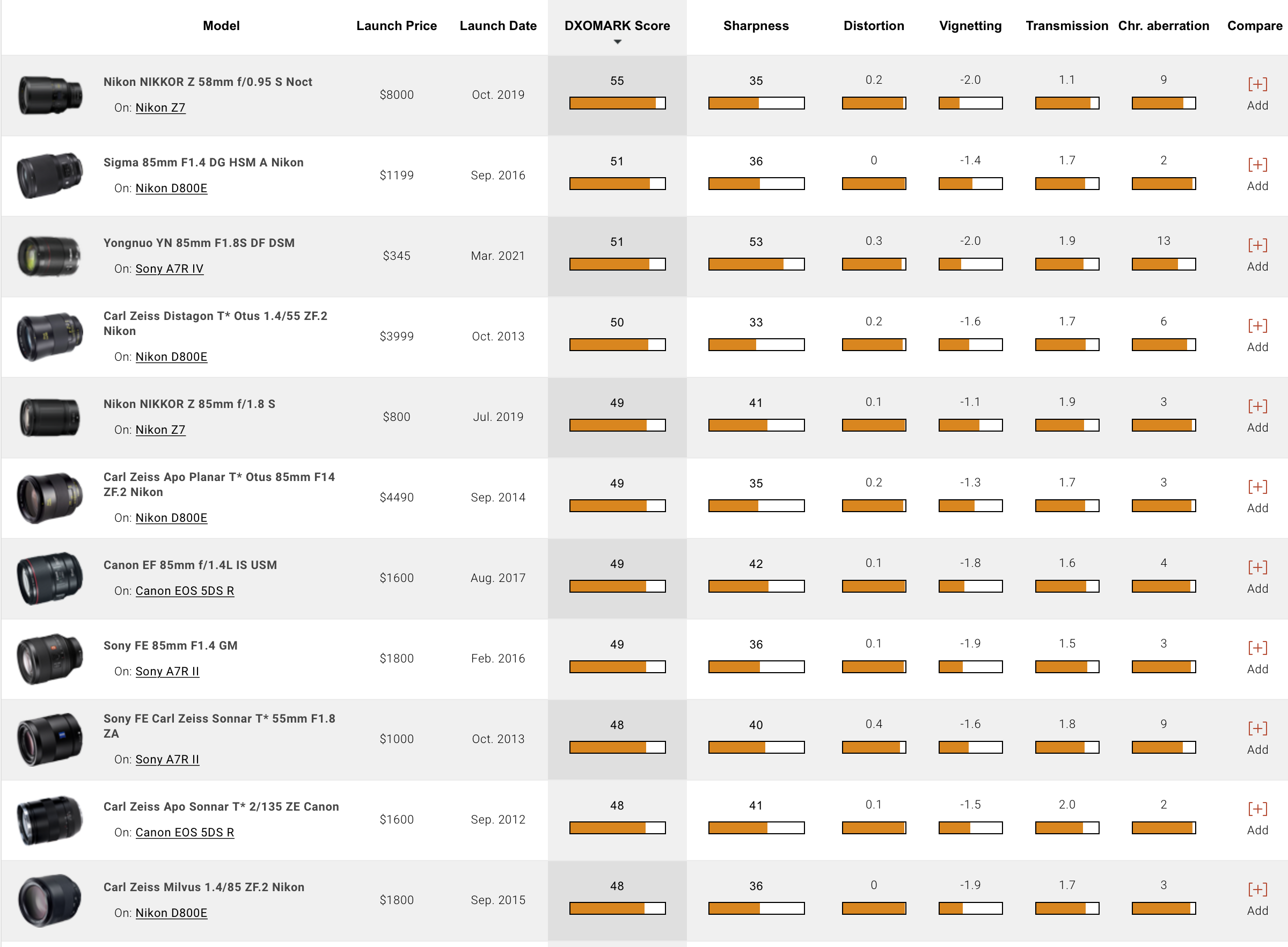DXOMark has some questionable ways of testing, but they’re a pretty accurate and good resource for data about lenses and cameras. Every now and again, I’ll check out their lens and camera sensor tests. To my surprise, this is the first time an insanely affordable Chinese-made lens is outdoing lots of others on the list. As our Columnist Alex Ngningha said, Chinese products are sometimes better than Japanese ones. In this situation, he is hitting the nail on the head.
Subscribers get some sweet perks and are automatically entered into contests!. Download our app for iOS, iPad, and Android and get no banner ads for $24.99/year.
Look through the DXOMark lens scores and you’ll see that the Yongnuo 85mm f1.8 for Sony FE cameras is in the top five. Surprising? Yes! In fact, it’s changing our viewpoint. For a long time, I purposely avoided calling in Yongnuo’s lenses for our staff to review. I thought that, while being affordable, they must be knock-offs. But I realize I’m probably wrong, and we’re going to work on reviewing them all.
Manufacturers claim you often need to pay DXOMark to get reviewed and be in their database. This is against our ethics. But they’re also very good at doing their job. And DXOMark is still an accurate database with some caution. It’s often made me think more carefully about purchases. Canon lenses, for example, have wonderful character, but they’re not DXOMark chart toppers because they’re not intensely clinical. Fujifilm’s lenses barely appear on this list. The same goes for lots of German lenses and more. Where is all the Meyer Optik glass? With all this said, I don’t always trust the results and instead encourage our staff to make their own findings.
Regardless, I think so many things are changing now, and Japanese manufacturers can’t just paint blind smear campaigns against Chinese-made products the way they have for years. In truth, Chinese brands sometimes reinvent old-school products. The TTArtisan 28mm f5.6 lens I’m currently reviewing has differences from the Leica variant it’s based on. And this doesn’t only apply to lenses, but to flashes as well.
Further, I think we need to look back in history and see the truth. Years ago, Nikon got its start by copying Zeiss and Leica. Just ask Ken Rockwell, who’s a fountain of knowledge. After that, Canon got its start by somewhat copying Nikon. But what’s even stranger is that Japanese companies have had these odd ways of smearing each other in public but sleeping with each other behind closed doors. It became stranger after the tsunamis destroyed many factories almost a decade ago. Beyond that, more factories closed after the global pandemic.
Where the Japanese have an edge is in clinical manufacturing processes and weather resistance. I haven’t seen other brands outside of Japan really try to do that. You can make an argument for Zeiss, but their lenses are made by Cosina, or at least they used to be.
What does this mean for the future? I think that Chinese camera brands are going to start becoming more legitimate powers in the photo industry. Korean, Japanese, and European brands already do quite well. And our industry needs more competition.



